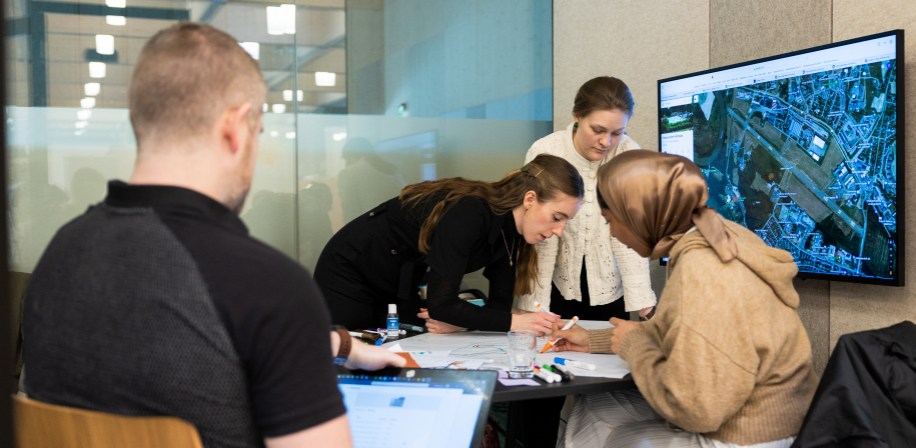Norwegian University of Life Sciences (Norway) NMBU gets its first Centre for Excellence in Education

In 2022, the Norwegian Directorate for Higher Education and Skills assessed 28 applications for the status of Centre for Excellence in Education. Of these, three were successful including the Centre for Integrated and Transdisciplinary Education in Planning (SITRAP) at NMBU’s Faculty of Landscape and Society.
It is one of three new educational centres to be awarded excellence status this year. The other two are the University of Oslo’s Centre for Interdisciplinary Education and the University of Agder’s Centre for Creative Use of Technology in Music Education (CreaTeMe).
“What the new centres have in common is that they highlight big questions and specify how higher education can contribute to solving them. They also envision how students should be equipped to enter a changing labour market and society. I look forward to following them further,” says Sveinung Skule, Director of the Norwegian Directorate for Higher Education and Skills in a press release from the directorate.
The main purpose of SITRAP is to develop teaching methodology for spatial planning. There are several educational programs in Norway that teach various aspects of spatial planning, such as architecture, landscape architecture, urban and regional planning, engineering, and property development.
“We are more concerned with what these educational programmes have in common than what separates them,” says architecture and urban planning professor Elin Børrud, who is one of NMBU’s Excellent Teaching Practitioners and leader of SITRAP.
Strong partnerships with students and a coherent leadership structure are some of the qualities that led to the centre being awarded its new status. “The panel felt that SITRAP represented a strong candidate for the award of SFU centre status. It is based on solid existing foundations and has a coherent leadership structure. The strong partnership with students was seen as a considerable advantage. The panel felt confident that the centre is capable of delivering the outlined proposal,” reads the panel’s justification text.
“This is incredibly important for NMBU as an educational institution. We are of course both proud and delighted,” says NMBU’s Pro-Rector for Education, Elise Norberg. “To be awarded a Centre for Excellence in Education is a recognition of the strong academic environment at SITRAP, and a feather in the cap for NMBU. We already have a Centre of Excellence (SFF) and two Centres for Research-Based Innovation (SFIs), and it was a stated goal to also get a Centre for Excellence in Education.”
Dean of NMBU’s Faculty of Landscape and Society, Eva Falleth also expressed her congratulations: “This is an academic environment that has worked systematically with quality in education over time. Whilst this will be of great benefit to the students, educational programmes and learning environments involved, everyone at our Faculty and at NMBU will be boosted by this academic development,” says Falleth, who is also a professor in Urban and Regional Planning.
Third time lucky
SITRAP was established in 2018 on the basis of an application made in 2016 to become a Centre for Excellence in Education. Another application was made in 2019. Finally in 2022, SITRAP was successful, making it the first such centre at NMBU.
“It’s a great advantage that we already developed a structure and framework as a Centre for Excellence in Education. We are delighted that we were able to convince the Directorate that we maintain a level of excellence,” says Elin Børrud.
A Centre for Excellence status brings funding, half of which comes from NMBU with the remainder coming from the SFU initiative. SITRAP will have an annual budget of around NOK 6.5 million. This will go to both positions and operating funds for various projects within the Centre.
A national resource
SITRAP will be a national centre, meaning that the centre will not only benefit NMBU but all institutions that teach within this field. Today, SITRAP has a working group consisting of lecturers from NMBU’s master programmes in Landscape Architecture, Urban and Regional Planning and Property Development. In addition, it has a reference group consisting of representatives from other parts of NMBU, key contacts in consultancies, municipalities and county councils as well as relevant professional bodies such as the Norwegian Association of Local and Regional Authorities (KS) and DogA – Design and Architecture Norway.
Børrud explains, “The teaching methodology for spatial planning focuses on various aspects of learning, including practical competence and how this is incorporated into the teaching. For this, we have started a collaboration with the Centre for Practical Knowledge at Nord University.”
NMBU rector Curt Rice believes the benefits of SITRAP will reach beyond spatial planning. “All of us here at NMBU are pleased and proud of SITRAP’s success in the competition to create a Centre for Excellence in Education. I’m confident that the work they do with this funding will benefit not only our students in urban planning but in other areas as well, as the pedagogical insights and approaches developed at the centre are shared across campus,” concludes the rector.
